Last year, in Portland, Oregon, an inspiring experiment unfolded over four intense days. At the Latinx Theatre Commons Designer and Director Colaboratorio, designers and directors came together to challenge the norms of their collaboration. We were placed into different groups, each composed of four designers, one director, and one scholar/documentarian. Out of this emerged a unique dream collaboration process, at least for my group, that elevated and revolutionized the way I look at the dynamics of creative partnerships in theatre. The Colaboratorio provided a safe, brave space for imaginative exploration, where the fusion of artistic vision and inventiveness opened doors to redefining the very essence of collaboration. My group was composed of Jorge Arroyo (lighting designer), Tamanya Garza (director), Susana Monreal (costume designer), Daniel Pinha (scenic designer), Efrain Schunior (sound designer), and myself (scholar/dramaturg). Together, we created a model that challenges the current model of designer-director collaboration by decentering the director and recentering the entire group. We called it a Designer-Director-Dramaturg Dalliance.
A Designer-Director-Dramaturg Dalliance
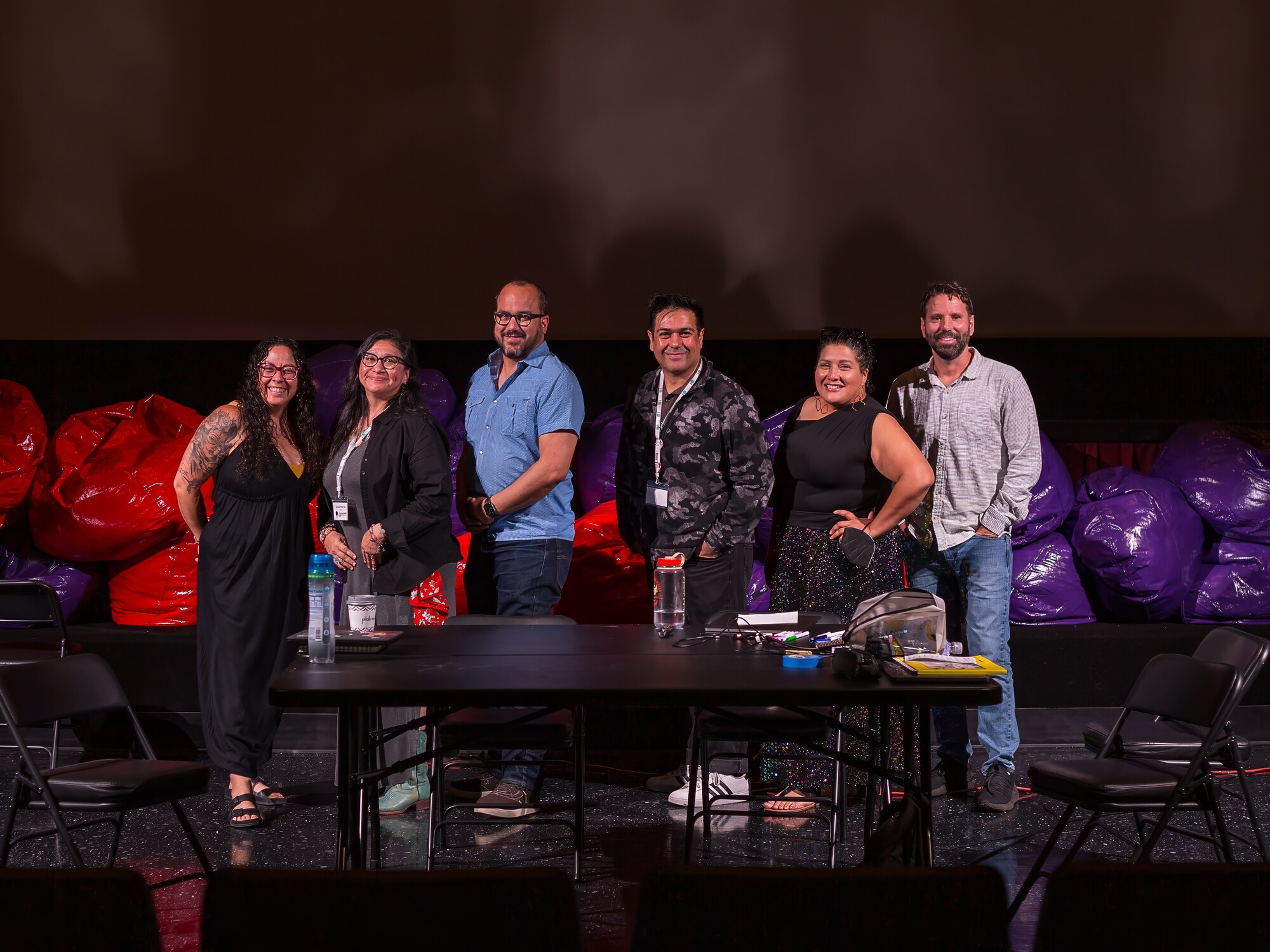
Daphnie Sicre, Susana Monreal, Jorge Arroyo, Efrain Schunior, Tamanya Garza, and Daniel Pinha at the Latinx Theatre Commons Designer and Director Colaboratorio. Photo by Roy Arauz.
Over four days we created a concept that empowered inclusivity and unbounded creativity. It also allowed us, for a short period of time, to conceive, dream, and deconstruct the extant systemic model of designer-director collaboration. We reimagined what it would look like if we could dream and create our own process not dictated by rules, norms, a top-down system, or a single person such as a director or producer.
Let’s delve into the process we developed: Designer-Director-Dramaturg Dalliance
It is important to remember that a dalliance is “interest or involvement in an activity that only lasts a short period of time.” When thinking about theatre and the production of plays, the time spent is a dalliance because for those involved it will only last short period of time. Thus, why not start the creative process with this idea in hand and involve everyone in the process?
An invitation is sent to the designers, director, and dramaturg to gather for a dalliance of two paid days where they will together conceptualize the world of the play. Prior to this the artistic director or producer would discuss the purpose of the gathering, producing this play, centering anti-oppression work, and offering resources for folks interested in continuing that work. When the designers are approached and invited into the process, they are given the script, theatre drawings, inventory lists, budget, and timeline. The designers, dramaturg, and director are asked to come to the gathering having read the play.
This process allowed for everyone in the room to share their first response without judgement and without a director dictating what the vision is.
Day One
On the first day of this short gathering, folks are welcomed into the space to engage in a deep conversation. Sitting together around a table, everyone in the room starts by getting to know knowing each other. While this might seem common sense, most production meetings start with introductions, and then a director shares their vision. Designers and directors often do not share the same space until tech. Many times, folks have been hired by the artistic director or producer, and they might have never met their collaborators before. In this process, however, whether they know each other or not, folks enter the space to introduce themselves to one another, develop community agreements, and share how they speak/present/identify, as well as what their boundaries and needs are. This gathering also normalizes different kinds of learning (life experience, education, other types of experience) so that we don’t use the privilege of education as fodder for gatekeeping.
It is critical to get to know one another and understand how folks would work together, especially before the tech and dress rehearsal process. In the space of this gathering, these creatives undertake a clearly formalized process of creating language and agreements about what to do if harm occurs so that there is a clear understanding of how to move forward. It is also important to intentionally create a comfortable, brave space for everybody, where spark and imagination are welcome. By creating this together at the beginning of the process, and by including every single person involved in the process, these conversations set up a space of care, listening, and understanding.
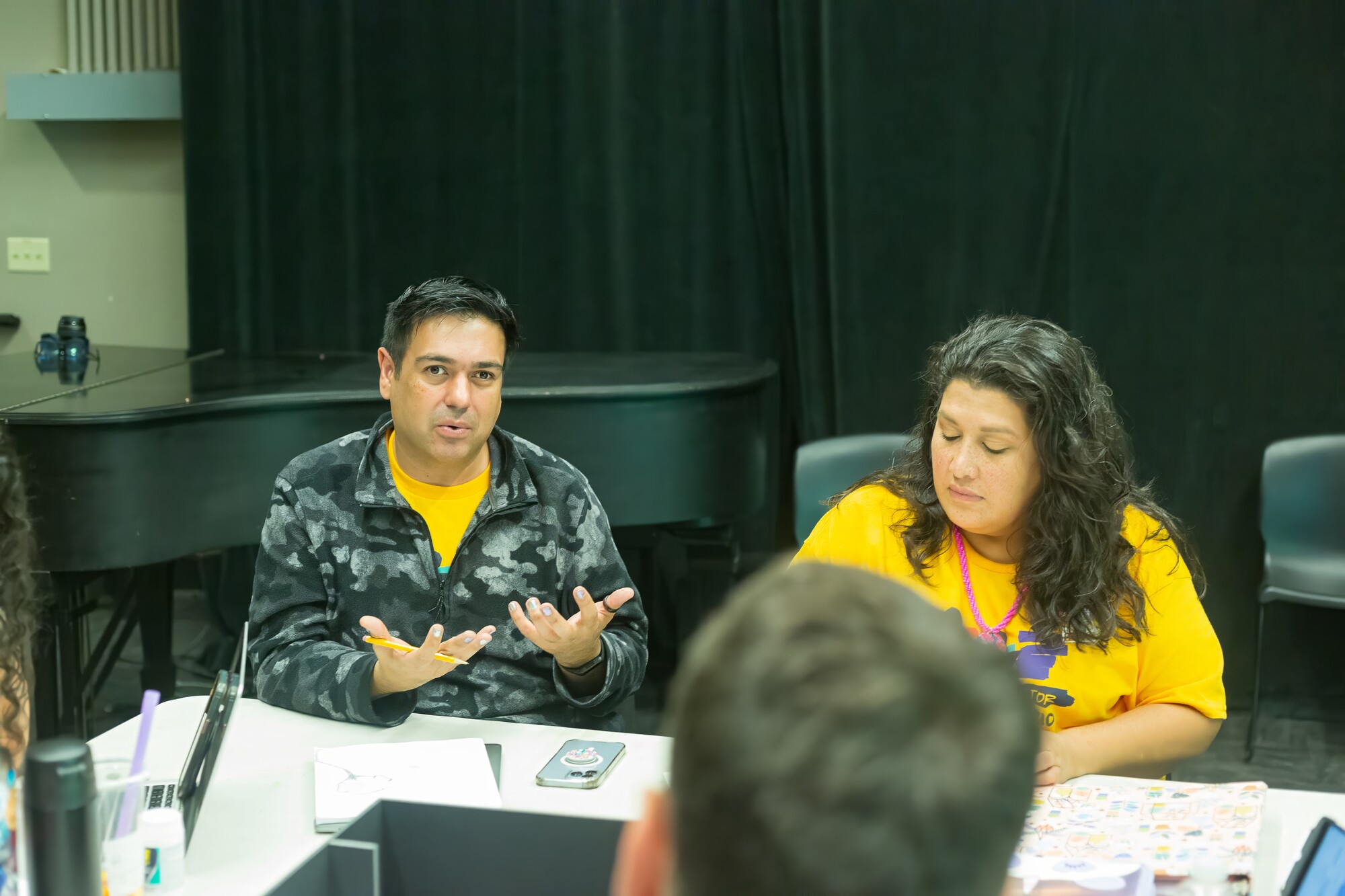
Efrain Schunior and Tamanya Garza at the Latinx Theatre Commons Designer and Director Colaboratorio. Photo by Roy Arauz.
Once the designers, director, and dramaturg have gotten to know each other, then they can verbally share their first emotional responses to the play, as well as any and all different perspectives and interpretations of the play. No interpretation is wrong; this is a space for sharing, listening, and learning.
What was fascinating about our conversation as we engaged in this process at Colaboratorio were the coincidences we shared. There were, of course, differences that each person shared, but what came out of this discussion were the moments of awe, discovery, and agreement. This process allowed for everyone in the room to share their first response without judgement and without a director dictating what the vision is. This became another step in decentering the director.
The first day of conversation closes with the notion that folks would return the next day with the goal of finding common and applying the conversations to create first “emotional design responses” in which collaborators apply their responses through a design element.
By applying these values to an ensemble-based approach to creating the world of the play, we have started to dismantle known systems of power in theatre.
Day Two
This second day is longer than the first day. It is divided into three separate parts. The first part, as mentioned above, is about finding commonalities in the world of the play. Then everyone shares their emotional design responses and engages in conversations about them, and finally they conceptualize together, thinking what they can create together.
Think of this dalliance as a retreat where the designers, director, and dramaturg gather before the rehearsal process begins to conceive of what the world of the play will be. This format gives designers a seat at the table from the very beginning, and it allows for collaborative ensemble engagement in concept development for the play. Everyone works together towards the same vision, as relationships have been established and ideas freely shared without judgement. As we engaged in this conversation at Colaboratorio, we found common ground. It was as if the ideas had planted seeds, and they all beginning to grow in harmony in the same garden.
Sharing responses first is critical to the development of an ensemble concept for the production. For those of us involved in the process at Colaboratorio, this sharing helped decenter the director-led hierarchy and opened the process to a communal approach. For me, creating a space where those who were in power (usually the director) now sit around a table and listen to multiple ideas instead of dictating what is to be thought is a powerful act of decolonization. Decolonizing can be about interrupting the power structures established through European colonialism, which focus on ownership, hierarchy, and profit and foster individualism over communal care. By transforming the "director's concept" approach into a communal approach, we dismantle hierarchical systems that exploit those foundational to power structures. This shift recognizes the interconnectedness of those in the space, fostering a more equitable environment where collective input and communal care from all the creatives are prioritized over an individual perspective. By applying these values to an ensemble-based approach to creating the world of the play, we have started to dismantle known systems of power in theatre.
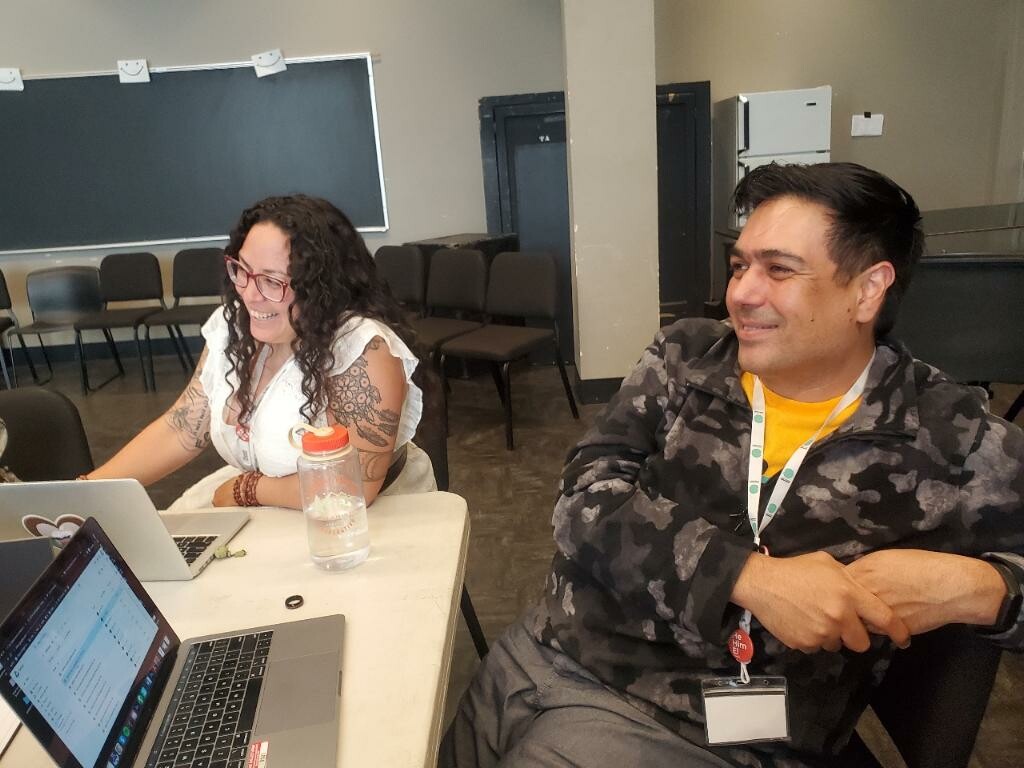
Daphnie Scire and Effrain Schunior at the Latinx Theatre Commons Designer and Director Colaboratorio. Photo by Tamanya Garza.
Thus, on the second day, the team begins a new discussion of the play. Rather than focus on their first feelings or reactions evoked by the piece, now it is time to analyze the play together. This could be considered table talk by some, as the creatives in the space are now engaging with the world of the play in conversation with the director and dramaturg. A Liz Lerman approach, or a version of it, could be used to start the discussion, and the dramaturg could help lead it, again placing the director and designers on the same playing field. When I worked with dramaturg Jacqueline E. Lawton, she used an adaptation of Lerman's approach that focused on these questions: What resonates immediately with those involved with the discussion? What do they find confusing? Who or what do they want to know more about in this world?
The next step is sharing emotional design responses. These could either take the form of a visual platform, such as Pinterest or Google image search, or collaborators could create playlists or soundscapes on digital platforms that are accessible to all. The collaborators share their responses, and the conversation that follows allows for folks to bounce ideas off each other and dissect the possibilities of design. The visuals and sounds help minimize language barriers and encourage the different disciplines to share through their most comfortable means of communication. For us, Pinha started sketching as we spoke; and Monreal and Arroyo started gathering images that inspired them. Schunior started thinking of a soundscape and shared it. It all happened organically. We were watching seeds grow in real life. The group started exchanging each of these ideas, and this space blossomed. Each idea kept inspiring folks before we took a break to process.
Yes, budgets have been sent, space limitations have been shared, but even with these restraints these conversations are made to dream and not restrict.
Part two of the day is spent together but separately. This collective time together gives the sound designer time to listen with their headphones, the scenic designer time to sketch, and ideally the designers could have time for co-collaboration discussions while designing the concepts the group decided upon. There is quiet time as well as time to ask questions of each other. The director and dramaturg are also still involved, as they can engage in conversations with the designers, assist them, or work on their own research.
Upon returning from our break at Colaboratorio, we first all gathered and created a digital space where everyone could add their images and inspirations. Then we decided to give designers time to collaborate, create, flesh out designs, and share interesting ideas together while being in the same space and in conversation. This means a designer didn’t have to design alone. They could lean over to another and say, “What do you think?” or turn to the dramaturg and say, “Can you help me find information on…?” This allowed time for everyone to be in the space together and work on their craft individually but collectively.
The creative team comes together at the end of the second day and shares their ideas. They also set times and dates to meet again before the first production meeting and rehearsals, ahead of final design deadlines. They can meet collectively or individually; this is completely up to them to decide. For us in the room, we didn’t get past this step, but we enjoyed this so much that we all hope to one day be able to put it into development.
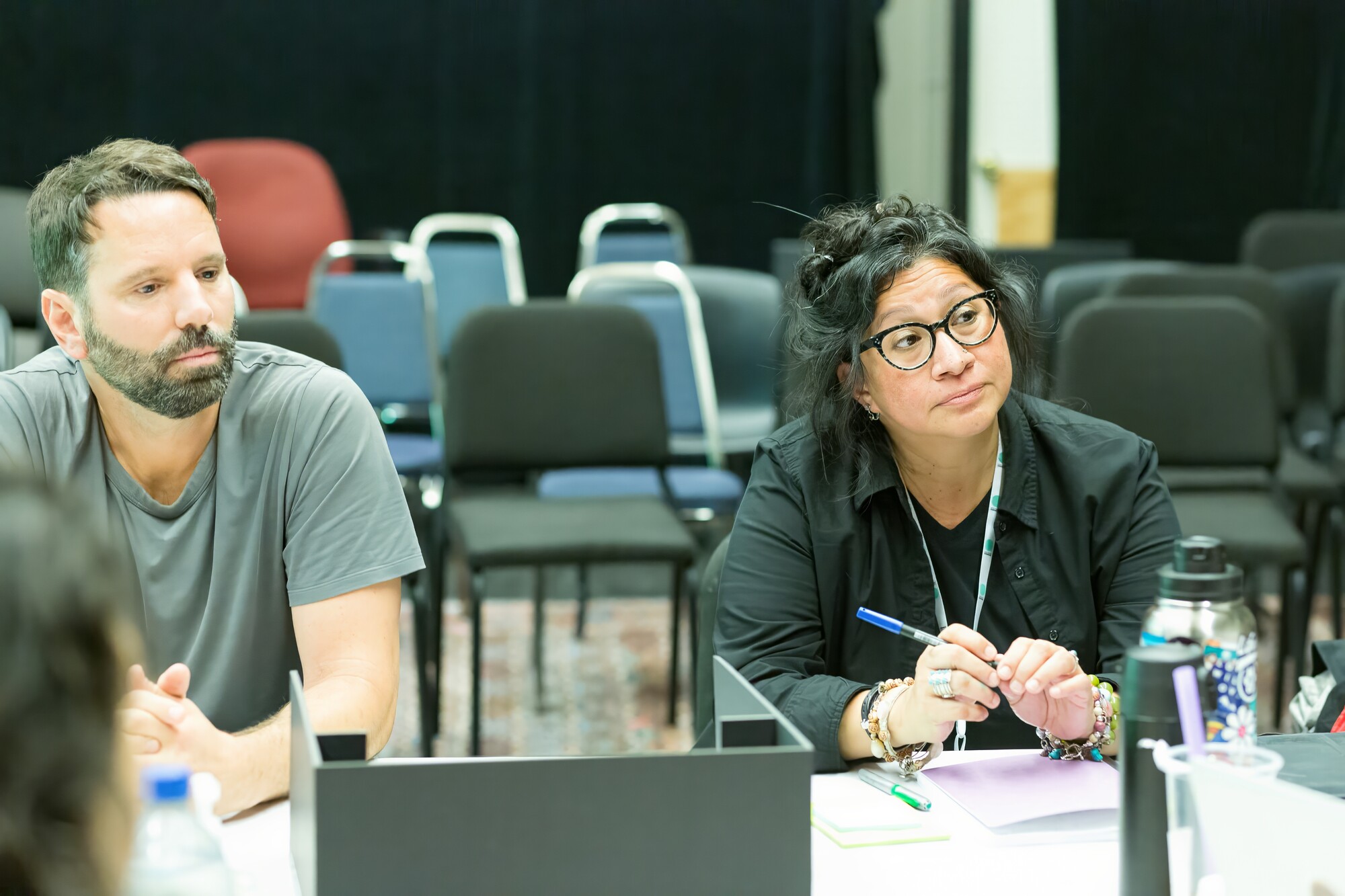
Daniel Pinha and Susana Monreal at the Latinx Theatre Commons Designer and Director Colaboratorio. Photo by Roy Arauz.
At any moment, the director or a designer or dramaturg can opt out of being in the space and this process. If this process is not for them, they may withdraw, and they will be paid for their time. This is very important because for this process to work, everyone needs to want to be there and believe in this process. But not everyone is going to want to participate. Anyone should have the right to leave at any moment they no longer want to be a part of the process, especially during this gathering. Granted this may disrupt the process or gathering, but someone else can be invited to the space—and the ideas—to keep the process going. The idea for this gathering is to create a space for dreaming first. Yes, budgets have been sent, space limitations have been shared, but even with these restraints these conversations are made to dream and not restrict.
Following this process, the team goes back to rereading the script and use time to percolate design for the story. Ideally, they have at least a month to digest the experience and the information gathered and for everyone to collect notes. During this time, design meetings occur individually and collectively as needed. Thus, design would be fleshed out before the first production meeting. At that time, designers create the necessary technical drawings, sketches, models, and communications with production folks to provide all the necessary information to production staff. We encourage collaboration with the designers and technical staff as this process is happening.
During our time with the Colaboratorio, we were not able to fully explore how we would like to continue dismantling the design process. Personally, I haven’t had the chance to implement this process, even though I am a new artistic director/director/dramaturg. I am in the perfect position to try and implement this process, but unfortunately, I haven’t had the professional chance to put it into action.
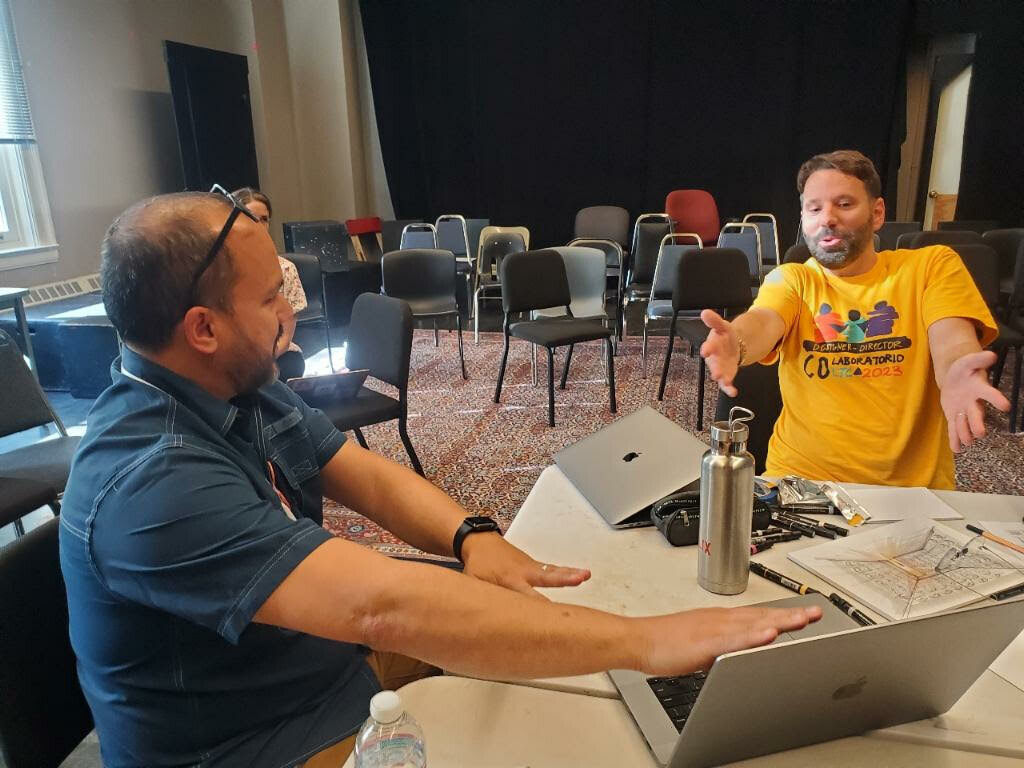
Jorge Arroyo and Daniel Pinha at the Latinx Theatre Commons Designer and Director Colaboratorio. Photo by Daphnie Sicre.
The Latinx Theatre Commons Designer and Director Colaboratorio experience in Portland, Oregon, was not merely a moment in time; it was a call to reimagine the very foundation of collaborative theatremaking. Our dream collaboration process transcended boundaries and norms, inviting each participant to an uncharted realm of creative expression. This endeavor, which began with open hearts and a profound emphasis on community building, gives me the hope of one day ushering in an era where designers, directors, dramaturgs, and artists of all disciplines converge as equals, embarking on a collective journey towards a shared vision.
While the Colaboratorio may have concluded, and a year has passed, its impact continues to reverberate with me. We—Jorge Arroyo, Tamanya Garza, Susana Monreal, Daniel Pinha, Efrain Schunior, and myself—hope this dalliance model can seed a new narrative in the world of theatre—one that prioritizes inclusivity, imagination, and the beautiful interplay of diverse voices. We hope the Designer-Director-Dramaturg Dalliance, although short, stands as a testament to the power of communal creation, forever reminding us that the theatre is not only a stage, but a sanctuary where dreams take flight.

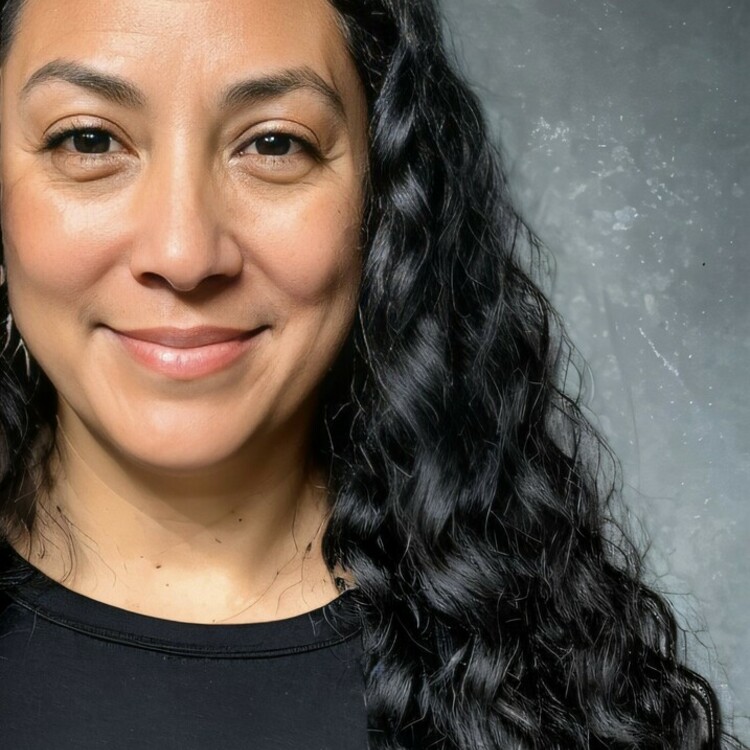
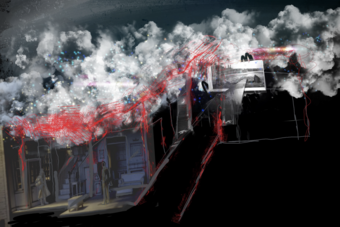


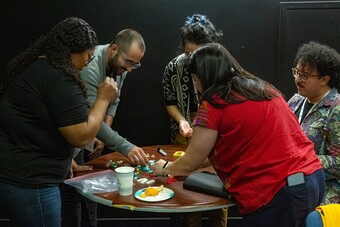

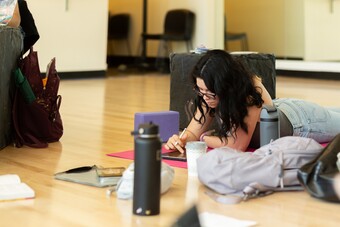

Comments
The article is just the start of the conversation—we want to know what you think about this subject, too! HowlRound is a space for knowledge-sharing, and we welcome spirited, thoughtful, and on-topic dialogue. Find our full comments policy here